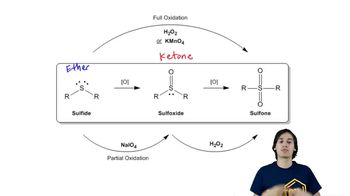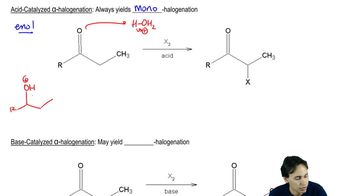What are the products of the following reactions? Show all stereoisomers that are formed.
a.
b.
 Verified step by step guidance
Verified step by step guidance Verified video answer for a similar problem:
Verified video answer for a similar problem:


 0:24m
0:24mMaster Intro to Predict the Product with a bite sized video explanation from Johnny
Start learning